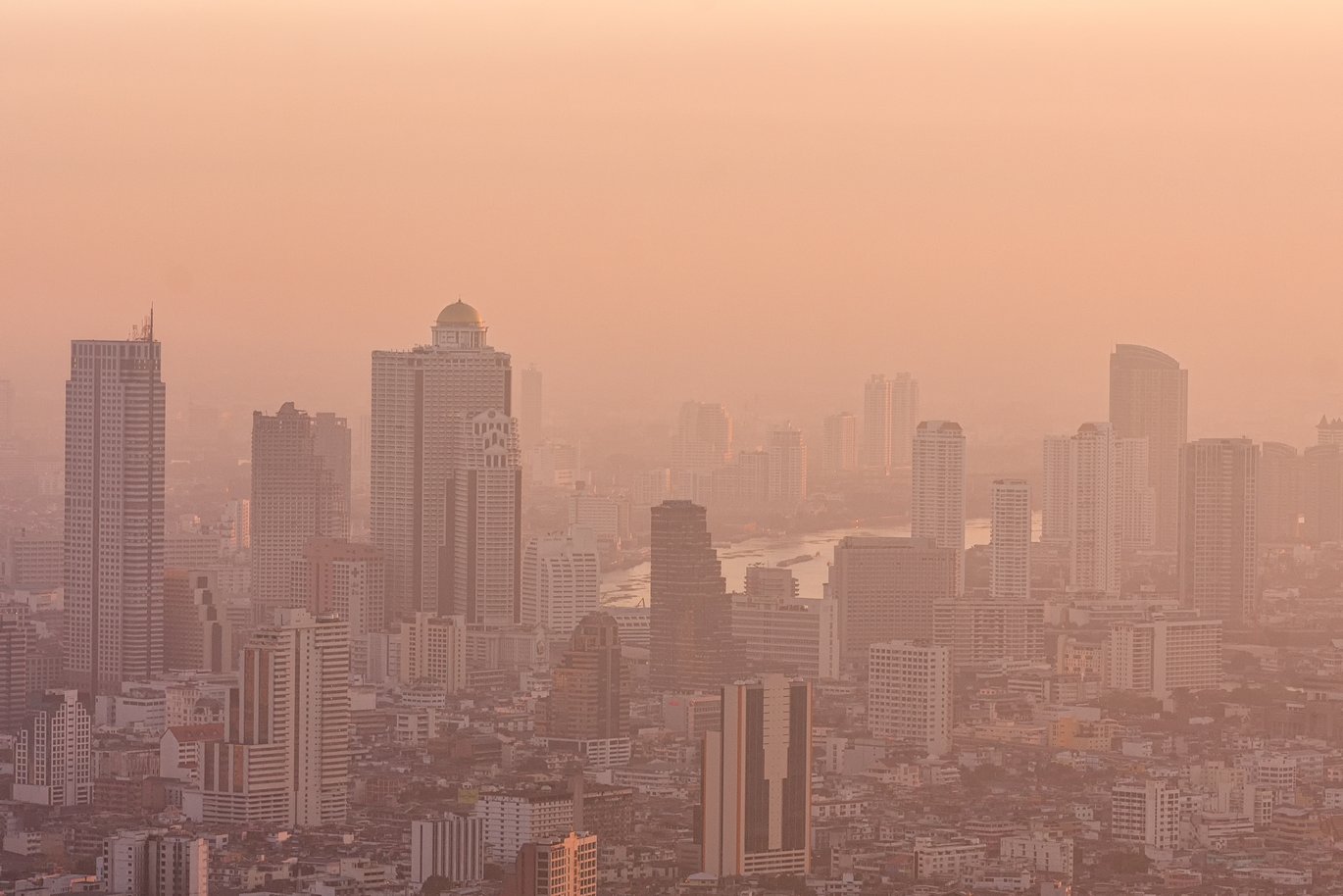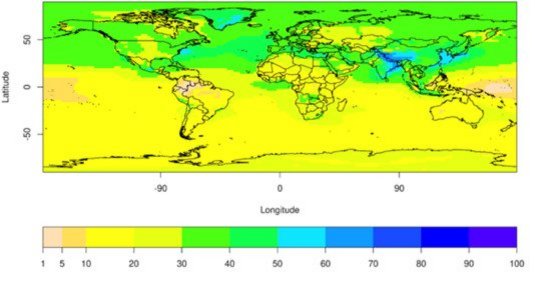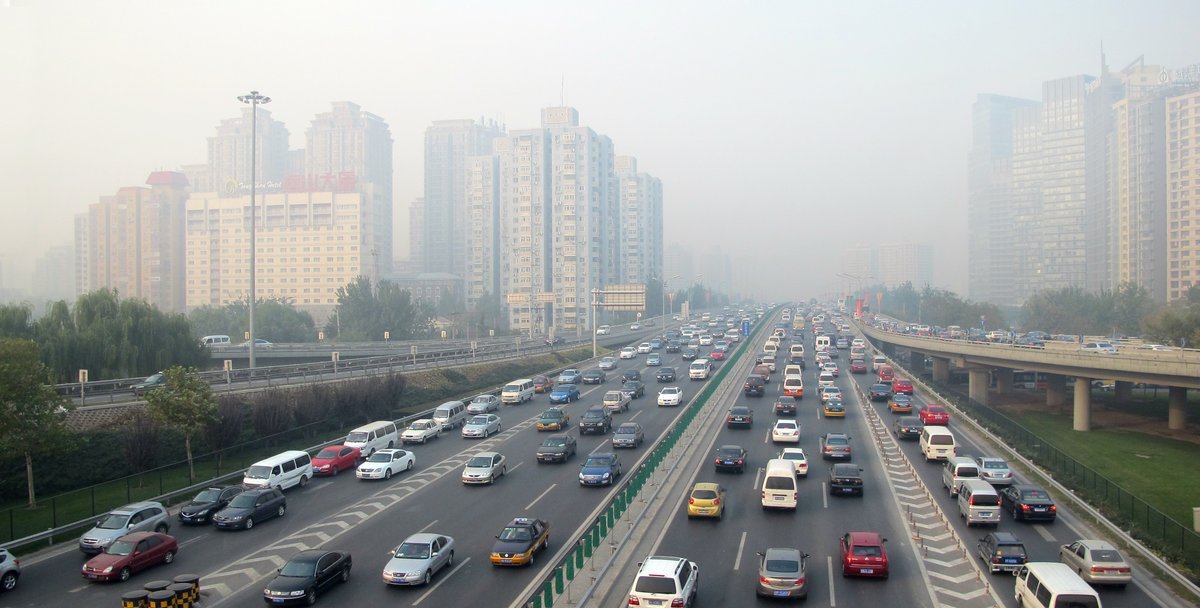Danish researcher and NASA predict how many people will die from air pollution in the future
Around seven million people will die prematurely from air pollution annually in the future if we do not change our ways.

They come from factory stacks, car exhaust pipes and cruise liner engines. They are tiny particles and they are all around us. When we breathe in air, these particles settle in the small vessels of our lungs, and they make us sick.
For many years now, we have known that air pollution is bad for our health. For example, American researchers have found that you have a 20 per cent higher risk of dying prematurely if you live next to a big road.
In recent years, many countries – especially Western countries – have spent time and efforts to come up with solutions to reduce air pollution. Particle filters and phasing out use of the most polluting energy sources have helped. In Denmark, emissions of fine particles have been reduced by 48 per cent since 1990.
But despite this progress, even more people will die prematurely from particulate air pollution in the future according to model calculations performed by Ulas Im, Department of Environmental Science at Aarhus University, in collaboration with NASA.
Together, Im and Nasa have developed a global model for air pollution that includes climate change, particle emission reduction measures and changes in population composition. The model depicts a bleak future, especially for the countries in Asia.
"Even if they reduce air pollution significantly in Asia, the mortality rate will still be high. This is because their populations are ageing. And you become more vulnerable to pollution with age," Ulas Im says.
Although China has done much to reduce air pollution in recent decades, air pollution will have a dire impact in the future. Even if they step up their efforts. This is because of their aging population. A greater share of the population will simply be more vulnerable.
Ulas Im
Extremely complicated calculations
Ulas Im from Aarhus University and NASA have come together in this project because both institutions have unique technology that, combined, offer entirely new possibilities and perspectives.
The NASA Goddard Institute for Space Studies in New York has one of the most advanced climate models in the world, and Aarhus University has one of the best computer models for how air pollution affects human health.
By creating a hybrid of the two models and running the new model through Aarhus University's supercomputer, Ulas Im and his partners from NASA could create three scenarios for how air pollution will affect human health in the future.
"We fed the model with three different scenarios. One in which most of the world continues to regulate and try to limit air pollution. One in which we do even more than we do today. And, finally, one in which we do less," he says.
But even in the most optimistic of the three scenarios, the result turned out to be bleak. Especially for Asia.
"Although China has done much to reduce air pollution in recent decades, air pollution will have a dire impact in the future. Even if they step up their efforts. This is because of their aging population. A greater share of the population will simply be more vulnerable," he says.

Fine particles and hazardous chemical compounds
The particles that Ulas Im and NASA include in their model are among the most harmful anthropogenic pollutants. However, the model does not include all forms of air pollution, he emphasises.
"We have studied the effect of fine particles, which are also referred to as PM2.5, and the effect of ozone, which is formed in the atmosphere when NOx gases and other molecules that we humans emit, react with the air," he says.
Both fine particles and ozone are harmful to our lungs.
The fine particles penetrate deep into the lungs and end up in the alveoli, in the tiniest air spaces of the lungs, where they settle and do damage because they make it more difficult to breathe. The consequences of this can be severe. Some people may develop asthma, others blood clots, hardening of the arteries, or even cancer.
Ozone has the same effect. The tiny gas molecules can cause damage to the lungs, which can cause chest pain and breathing difficulties.
The damage has already been done
In the most optimistic of Ulas Im’s scenarios, we manage to do a lot more to reduce air pollution at global level. But the scenario still predicts an annual death rate of four million people.
"Because of an ageing population in Asia, it’s difficult to prevent these deaths. Even if they were to do everything they could, they would still not be able to prevent the high death rate," he says.
This is because air pollution is a slow killer. The seeds of future illness and death have already been planted in many people. In other words, the damage has already been done. Therefore, the numbers will not be reduced, even if we cut our emissions of harmful particles drastically.
"Even if we electrify our cars, replace coal-powered and gas-powered power plants with wind turbines and solar PV, and cut down on aviation, we won’t be able to rectify the damage already done to our lungs," he says and continues:
"But having said that, the particles disappear from the air quickly when we limit our emissions. It's not like with carbon dioxide, which stays in the atmosphere for hundreds of years.”

Air pollution in the countryside as well
Cities are responsible for a substantial share of air pollution. This is where there are most cars, factories and power plants; and this is where aircraft land and cruise liners dock. But this does not necessarily mean that the air is clean once you get to the countryside.
"There are more fine particles in the air in the cities. But there is less ozone. In the countryside, it’s the other way around. Here, there are fewer fine particles and more ozone. This is because, in the cities, ozone decomposes because of emissions from factories, while it thrives in the countryside," says Ulas Im.
So, we are affected by air pollution both in the countryside and in cities. Even if the air feels nice and clean, it may be filled with ozone, which is also harmful to our lungs.
"So it’s false to think that rural areas are free of air pollution, although it’s still healthier to live in the countryside," he says, and continues:
"We hope that our calculations will lead to politicians around the world taking the problem even more seriously. We hope that they will use the figures to make decisions about limiting air pollution even further; both in the countryside and in the cities," he says.
| About the research | |
|---|---|
| Type of study | Computer simulation |
| External collaborators | NASA Godard Institute for Space Studies. |
| Conflict of interests | The authors declare that the research was conducted in the absence of any commercial or financial relationships that could be construed as a potential conflict of interest. |
| Link to the scientific article | Present-day and future PM2.5 and O3-related global and regional premature mortality in the EVAv6.0 health impact assessment model |
| Contact info | Ulas Im Senior researcher at the Department of Environmental Science Phone: +45 50 15 40 50 Mail: ulas@envs.au.dk Jeppe Kyhne Knudsen Journalist and science communicator Tlf.: +45 93 50 81 48 mail: jkk@au.dk |
